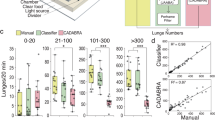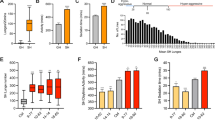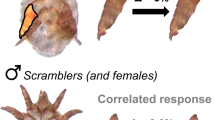Abstract
Aggressive behavior is pervasive throughout the animal kingdom, and yet very little is known about its molecular underpinnings. To address this problem, we have developed a population-based selection procedure to increase aggression in Drosophila melanogaster. We measured changes in aggressive behavior in the selected subpopulations with a new two-male arena assay. In only ten generations of selection, the aggressive lines became markedly more aggressive than the neutral lines. After 21 generations, the fighting index increased more than 30-fold. Using microarray analysis, we identified genes with differing expression levels in the aggressive and neutral lines as candidates for this strong behavioral selection response. We tested a small set of these genes through mutant analysis and found that one significantly increased fighting frequency. These results suggest that selection for increases in aggression can be used to molecularly dissect this behavior.
This is a preview of subscription content, access via your institution
Access options
Subscribe to this journal
Receive 12 print issues and online access
$209.00 per year
only $17.42 per issue
Buy this article
- Purchase on Springer Link
- Instant access to full article PDF
Prices may be subject to local taxes which are calculated during checkout






Similar content being viewed by others
References
Blanchard, D.C. & Blanchard, R.J. The colony model of aggression and defense. in Contemporary Issues in Comparative Psychology (ed. Dewsbury, D.A.) (Sinauer, Sunderland, Massachusetts, 1990).
Popova, N.K., Nikulina, E.M. & Kulikow, A.V. Genetic analysis of different kinds of aggressive behavior. Behav. Genet. 23, 491–497 (1993).
Baker, R.R. Insect territoriality. Annu. Rev. Entomol. 28, 65–89 (1983).
Lorenz, K.Z. On Aggression (Harcourt, Brace and World, New York, 1963).
Sturtevant, A.H. Experiments on sex recognition and the problem of sexual selection in Drosophila. J. Anim. Behav. 5, 351–366 (1915).
Jacobs, M.E. Influence of light on mating of Drosphila melanogaster. Ecology 41, 182–188 (1960).
Dow, M.A. & von Schilcher, F. Aggression and mating success in Drosophila melanogaster. Nature 254, 511–512 (1975).
Jacobs, M.E. Influence of β-alanine on mating and territorialism in Drosophila melanogaster. Behav. Genet. 8, 487–502 (1978).
Partridge, L., Hoffmann, A. & Jones, J.S. Male size and mating success in Drosophila melanogaster and Drosophila pseudoobscura under field conditions. Anim. Behav. 35, 468–476 (1987).
Hoffmann, A.A. A laboratory study of male territoriality in the sibling species Drosophila melanogaster and D. simulans. Anim. Behav. 35, 807–818 (1987).
Hoffmann, A.A. Territorial encounters between Drosophila males of different sizes. Anim. Behav. 35, 1899–1901 (1987).
Hoffmann, A.A. Heritable variation for territorial success in two Drosophila melanogaster populations. Anim. Behav. 36, 1180–1189 (1988).
Hoffmann, A.A. Selection for territoriality in Drosophila melanogaster: correlated responses in mating success and other fitness components. Anim. Behav. 38, 23–34 (1989).
Hoffmann, A.A. Geographic variation in the territorial success of Drosophila melanogaster males. Behav. Genet. 19, 241–255 (1989).
Hoffmann, A.A. The influence of age and experience with conspecifics on territorial behavior in Drosophila melanogaster. J. Insect Behav. 3, 1–12 (1990).
Hoffmann, A.A. & Cacoyanni, Z. Territoriality in Drosophila melanogaster as a conditional strategy. Anim. Behav. 40, 526–537 (1990).
Hoffmann, A.A. Heritable variation for territorial success in field-collected Drosophila melanogaster. Am. Nat. 138, 668–679 (1991).
Lee, G. & Hall, J.C. A newly uncovered phenotype associated with the fruitless gene of Drosophila melanogaster: aggression-like head interactions between mutant males. Behav. Genet. 30, 263–275 (2000).
Ueda, A. & Kidokoro, Y. Aggressive behaviours of female Drosophila melanogaster are influenced by their social experience and food resources. Physiol. Entomol. 27, 21–28 (2002).
Baier, A., Wittek, B. & Brembs, B. Drosophila as a new model organism for the neurobiology of aggression? J. Exp. Biol. 205, 1233–1240 (2002).
Chen, S., Lee, A.Y., Bowens, N.M., Huber, R. & Kravitz, E.A. Fighting fruit flies: a model system for the study of aggression. Proc. Natl. Acad. Sci. USA 99, 5664–5668 (2002).
Nilsen, S.P., Chan, Y.B., Huber, R. & Kravitz, E.A. Gender-selective patterns of aggressive behavior in Drosophila melanogaster. Proc. Natl. Acad. Sci. USA 101, 12342–12347 (2004).
Nelson, R. & Chiavegatto, S. Molecular basis of aggression. Trends Neurosci. 24, 713–719 (2001).
Droney, D.C. Tests of hypotheses for lek formation in Hawaiian Drosophila. Anim. Behav. 47, 351–361 (1994).
Sivinski, J.M., Epsky, N. & Heath, R.R. Pheromone deposition on leaf territories by male Caribbean fruit flies, Anastrepha suspensa (Loew) (Diptera: Tetriphidae). J. Insect Behav. 7, 43–52 (1994).
Droney, D.C. & Hock, B.M. Male sexual signals and female choice in Drosophila grimshawi (Diptera: Drosophilidae). J. Insect Behav. 11, 59–71 (1998).
Hamblen, M. et al. Germ-line transformation involving DNA from the period locus in Drosophila melanogaster: overlapping genomic fragments that restore circadian and ultradian rhythmicity to per0 and per- mutants. J. Neurogenet. 3, 249–291 (1986).
Shaw, P.J., Cirelli, C., Greenspan, R.J. & Tononi, G. Correlates of sleep and waking in Drosophila melanogaster. Science 287, 1834–1837 (2000).
Harshman, L.G. & Hoffmann, A.A. Laboratory selection experiments using Drosophila: what do they really tell us? Trends Ecol. Evol. 15, 32–36 (2000).
Osborne, K.A. et al. Natural behavior polymorphism due to a cGMP-dependent protein kinase of Drosophila Science 277, 834–836 (1997).
Lesch, K.P. et al. Association of anxiety-related traits with a polymorphism in the serotonin transporter gene regulatory region. Science 274, 1527–1531 (1996).
Grumbling, G. & Strelets, V. The FlyBase Consortium FlyBase: anatomical data, images and queries. Nucl. Acids Res. 34, D484–D488 (2006).
Mackay, T.F. et al. Genetics and genomics of Drosophila mating behavior. Proc. Natl. Acad. Sci. USA 102, 6622–6629 (2005).
Toma, D.P., White, K.P., Hirsch, J. & Greenspan, R.J. Identification of genes involved in Drosophila melanogaster geotaxis, a complex behavioral trait. Nat. Genet. 31, 349–353 (2002).
Greenspan, R.J. The varieties of selectional experience in behavioral genetics. J. Neurogenet. 17, 241–270 (2003).
Gibson, G. & Dworkin, I. Uncovering cryptic genetic variation. Nat. Rev. Genet. 5, 681–690 (2004).
Maibeche-Coisne, M., Merlin, C., Francois, M-C., Porcheron, P. & Jacquin-Joly, E. P450 and P450 reductase cDNAs from the moth Mamestra brassicae: cloning and expression patterns in male antennae. Gene 346, 195–203 (2005).
Wang, Q., Hasan, G. & Pikielny, C.W. Preferential expression of biotransformation enzymes in the olfactory organs of Drosophila melanogaster, the antennae. J. Biol. Chem., 274, 10309–10315 (1999).
Maibeche-Coisne, M., Nikonov, A.A., Ishida, Y., Jacquin-Joly, E. & Leal, W.S. Pheromone anosmia in a scarab beetle induced by in vivo inhibition of a pheromone-degrading enzyme. Proc. Natl. Acad. Sci. USA 101, 11459–11464 (2004).
McDonald, M.J. & Rosbash, M. Microarray analysis and organization of circadian gene expression in Drosophila. Cell 107, 567–578 (2001).
Bray, S. & Amrein, H. A putative Drosophila pheromone receptor expressed in male-specific taste neurons is required for efficient courtship. Neuron 39, 1019–1029 (2003).
Broughton, S.J., Kitamoto, T. & Greenspan, R.J. Excitatory and inhibitory switches for courtship in the brain of Drosophila melanogaster. Curr. Biol. 14, 538–547 (2004).
Hall, J.C. Control of male reproductive behavior by the central nervous system of Drosophila: dissection of a courtship pathway by genetic mosaics. Genetics 92, 437–457 (1979).
Acknowledgements
We would like to thank J. Sullivan for help with the behavioral analysis, D. Robinson for technical assistance, A. McCartney for help with the figures, J. Fleisher for help with the video files, B. van Swinderen for discussions and for comments on the manuscript and R. Andretic and S. Pangas for comments on the manuscript. This material is based on work supported by the US National Science Foundation under grant no. 0432063 (R.J.G. and H.A.D.) as well as by a grant from the Wacker Foundation (R.J.G.). R.J.G. is the Dorothy and Lewis B. Cullman Fellow at The Neurosciences Institute, which is supported by the Neurosciences Research Foundation.
Author information
Authors and Affiliations
Contributions
This study was designed by H.A.D. and R.J.G. H.A.D. performed the experiments, analyzed the data and wrote the manuscript.
Corresponding author
Ethics declarations
Competing interests
The authors declare no competing financial interests.
Supplementary information
Supplementary Figure 1
Arena assay and aspiration hole. (PDF 86 kb)
Supplementary Figure 2
Array expression profiles of gene in Table 2. (PDF 44 kb)
Supplementary Table 1
Biological categories of significant genes32 (P < 0.002). (PDF 123 kb)
Supplementary Video 1
Main male fighting elements in population cage. The video (three clips spliced together) was shot in a population cage (see Fig. 1a) focusing on one single territory at a time (a blue food cup 2 cm in diameter). The first clip shows wing threat behavior where males lift their wings up at a 45° angle in a threatening posture (which has also been referred to as “wings erect” behavior). The second clip shows the most common male fighting element, referred to as charging or lunging, where the territorial male charges at any intruder on the territory. Often this ends in a lunge where the attacking male lifts his front legs and drops down on the attacked male, who will typically be running away and receive the blow on his side or back. Occasionally, an intruder will not run away, resist the attacks and reciprocate the lunging attacks of the territory holder. This is shown in the third clip and often occurs in short repeated bouts. The two males will then lunge at each other and often box, wrestle and tussle in an attempt to gain control over the territory. We refer to this last behavior as escalated fighting. Such escalations are rare and occur in less than five percent of all aggressive encounters10,21. In the Aggr selected lines they can last for up to 10 minutes. (MOV 609 kb)
Supplementary Video 2
Main male fighting elements in scaled-down territorial assay (Fig 1c). The movie was shot in scaled-down territorial assay with two males, one mated female and small food territory (eppendorf cap filled with fly food). Three clips are spliced together, showing wing threat (slow motion), charging & lunging and escalation (slow motion). (MOV 651 kb)
Supplementary Video 3
Main male fighting elements in arena-assay. The movie shows one arena in the arena chamber. Three clips are spliced together. The first clip shows wing threat followed by a charge and holding, where the attacker grabs the wings of the other male. This often leads to a “roll over”, which is quantified as the intensity parameter in Fig 2d. The second clip shows a fighting sequence. The third clip shows both males in escalation mode, boxing and tussling. (MOV 762 kb)
Supplementary Video 4
Abdomen dipping. The movie was shot in the population cage focusing a single territory. Male streaks his genital area over the food surface while walking as if to mark the territory. Six separate clips are spliced together. (MOV 295 kb)
Supplementary Video 5
Aspiration of escalating males. The movie shows two males escalating on a blue food territory in the population cage. Aspirator comes in from the left and gently sucks up both males from the territory. (MOV 126 kb)
Rights and permissions
About this article
Cite this article
Dierick, H., Greenspan, R. Molecular analysis of flies selected for aggressive behavior. Nat Genet 38, 1023–1031 (2006). https://doi.org/10.1038/ng1864
Received:
Accepted:
Published:
Issue Date:
DOI: https://doi.org/10.1038/ng1864
This article is cited by
-
The effects of methylphenidate and atomoxetine on Drosophila brain at single-cell resolution and potential drug repurposing for ADHD treatment
Molecular Psychiatry (2023)
-
Alternative splicing plays key roles in response to stress across different stages of fighting in the fish Betta splendens
BMC Genomics (2022)
-
Subsecond multichannel magnetic control of select neural circuits in freely moving flies
Nature Materials (2022)
-
The Divider Assay is a high-throughput pipeline for aggression analysis in Drosophila
Communications Biology (2021)
-
Natural history of social and sexual behavior in fruit flies
Scientific Reports (2020)



